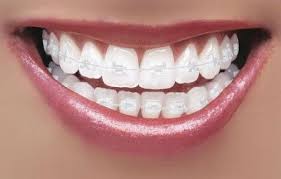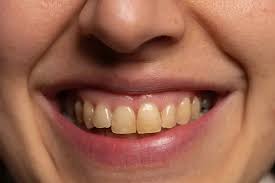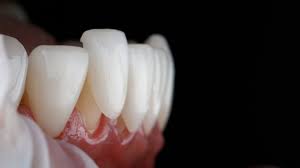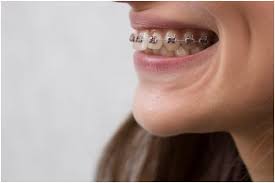Choosing the Right Dental Braces for Your Lifestyle

Strong8k brings an ultra-HD IPTV experience to your living room and your pocket.
When it comes to straightening your teeth, choosing the right dental braces for your lifestyle is a crucial step in ensuring both comfort and long-term success. Dental braces are a highly effective solution for correcting a wide range of orthodontic issues, including misaligned teeth, overbites, and underbites. However, with so many different types of braces available today, it’s important to find the one that best suits your preferences, dental needs, and lifestyle. Whether you're a teenager or an adult, there are several factors to consider in making the right decision. In this article, we’ll explore the various types of braces and how to choose the best one for your individual needs.
Why the Right Dental Braces Matter?
Choosing the right dental braces isn't just about aesthetics; it’s about finding a solution that complements your lifestyle. Here are a few reasons why making the right choice is important:
Comfort and Convenience:
Braces that fit comfortably into your daily routine can make your treatment journey easier and more manageable.
Discreet options allow you to feel confident in social and professional settings while undergoing treatment.
Treatment Duration:
Different types of braces can affect how long you need to wear them. For example, some options work more quickly than others, and this could be an important factor if you’re looking for faster results.
Maintenance and Care:
Certain types of braces require more frequent adjustments and careful maintenance, while others may be easier to take care of. Consider how much time and effort you can dedicate to maintaining your braces.
Types of Dental Braces and Their Benefits:
The right type of braces for you depends on several factors, including your dental condition, appearance preferences, and lifestyle. Let’s take a closer look at the most popular types of dental braces and how each one might fit into your lifestyle.
Traditional Metal Braces:
Overview: Traditional metal braces consist of metal brackets, wires, and rubber bands that work together to gradually move your teeth into alignment.
Best for: People with complex orthodontic needs, such as severe misalignments or bite issues. They can address a variety of dental conditions effectively.
Advantages:
Effective for complex cases: Metal braces are versatile and suitable for a wide range of dental problems.
Durability: They are sturdy and can withstand more force, which is helpful in more complicated cases.
Customizable: You can choose rubber band colors, adding a fun element to your braces experience.
Disadvantages:
Visibility: Metal braces are noticeable, which might be a concern for some people, especially adults and teens who may feel self-conscious about their appearance.
Comfort: The brackets and wires can cause some discomfort, particularly after adjustments.
Lifestyle Consideration: If you don’t mind visible braces and have a complex dental issue that needs correcting, metal braces could be the best option for you.
Clear Aligners (Invisalign):
Overview: Clear aligners, such as Invisalign, are transparent, custom-made plastic trays that fit over your teeth. These aligners gently shift your teeth into the desired position over time.
Best for: Mild to moderate alignment issues such as minor crowding, gaps, and slight bite issues.
Advantages:
Invisible: Clear aligners are virtually invisible, making them an ideal choice for those who want to straighten their teeth discreetly.
Removable: Aligners can be taken out when eating, drinking, brushing, and flossing, allowing for better oral hygiene and flexibility.
Comfortable: Unlike traditional metal braces, clear aligners have smooth edges and are less likely to cause mouth sores.
Disadvantages:
Discipline Required: Since they are removable, you must be disciplined about wearing your aligners for the recommended 20-22 hours a day. If you don’t wear them enough, treatment may take longer.
Not Suitable for Complex Cases: Clear aligners are better suited for patients with mild to moderate orthodontic issues. They may not be the best choice for severe misalignment or bite problems.
Lifestyle Consideration: If you lead a busy, social life or have professional concerns about the appearance of braces, clear aligners are a great option. However, they require commitment to wear them as prescribed.
Ceramic Braces:
Overview: Ceramic braces function similarly to metal braces but use tooth-colored or clear ceramic brackets to blend in with your natural teeth. The wires can also be made of clear or white materials.
Best for: Individuals who want a more discreet option compared to traditional metal braces but still need effective orthodontic treatment for moderate to severe cases.
Advantages:
Aesthetic Appeal: The clear or tooth-colored brackets make ceramic braces less noticeable than metal ones, which can be particularly appealing for adults and teens.
Effective for Most Cases: Ceramic braces work similarly to metal braces and can treat most orthodontic issues with effectiveness.
Disadvantages:
Staining: While the brackets are clear, the rubber bands can stain over time. Careful maintenance is required to keep them looking clean.
Durability: Ceramic brackets are more fragile than metal ones and can break if not treated gently.
Longer Treatment: Ceramic braces may take longer to move teeth compared to metal braces due to their reduced friction.
Lifestyle Consideration: If you’re looking for a more discreet option but still need a durable and effective solution, ceramic braces offer a good balance between aesthetics and performance.
Lingual Braces:
Overview: Lingual braces are similar to traditional metal braces, but they are placed on the back (lingual) side of your teeth, making them completely invisible to others.
Best for: People who want an invisible orthodontic solution but still need the effectiveness of traditional braces.
Advantages:
Invisible: Lingual braces are hidden from view, making them ideal for those who don’t want anyone to know they’re wearing braces.
Effective for All Cases: Like traditional braces, lingual braces are versatile and can address a wide range of dental issues, from mild to severe misalignment.
Disadvantages:
Comfort: Lingual braces can be less comfortable at first due to the positioning on the back of the teeth. They may cause more irritation to the tongue, especially in the initial stages.
Cost: Lingual braces tend to be more expensive than traditional metal or ceramic braces due to the custom-fitting process.
Difficulty in Cleaning: It can be more challenging to clean lingual braces properly, and you may need specialized tools.
Lifestyle Consideration: If discretion is a high priority for you and you're willing to deal with the potential discomfort and cleaning challenges, lingual braces are a great option.
Factors to Consider When Choosing the Right Braces:
Selecting the right type of braces requires careful thought. Here are some key factors to consider before making your decision:
Aesthetic Preferences:
If having a less noticeable treatment is a priority, clear aligners or ceramic braces may be better for you, as they are less visible than traditional metal braces.
Dental Condition:
If you have severe alignment issues or bite problems, traditional metal or lingual braces may be more effective in addressing your needs. Clear aligners are typically better for mild to moderate cases.
Budget:
Traditional metal braces tend to be the most affordable option, while clear aligners and lingual braces are often more expensive. Make sure to factor in the cost and check with your orthodontist about payment options.
Lifestyle and Maintenance:
Consider how much time you can dedicate to orthodontic care. Clear aligners require discipline to wear consistently, while traditional braces may require more frequent visits for adjustments.
Duration of Treatment:
Some braces, like metal braces, may take longer to achieve desired results compared to other options like clear aligners. Consult your orthodontist for a treatment plan tailored to your needs.
Conclusion:
Choosing the right dental braces for your lifestyle is key to achieving a beautiful, healthy smile. Whether you choose traditional metal braces, clear aligners, ceramic braces, or lingual braces, each option offers unique benefits to suit your individual needs. Consider your aesthetic preferences, budget, and the level of commitment you're able to make when deciding which braces are right for you. By discussing your options with an orthodontist, you can make an informed decision that will help you achieve the smile you've always dreamed of, with the least amount of disruption to your lifestyle.
Read more: Achieve Your Dream Smile with Expert Dental Braces
Note: IndiBlogHub features both user-submitted and editorial content. We do not verify third-party contributions. Read our Disclaimer and Privacy Policyfor details.







